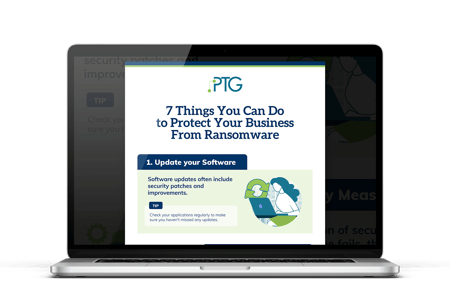
It may not have the same name recognition as the current Hybrid Work Revolution, but servers are also getting an away-from-the-office rebirth right now. Where once technology was entirely in-house, the last few years have pushed even small businesses to rethink how they compute – and what they use third-party.
Our refrain in nearly every blog we’ll write is always “if it fits for your team, you should try it” because, well, going serverless may not be for everyone. But if you’re selling yourself short by thinking your business is too small or couldn’t benefit and you haven’t done the research, then we’ve got some food for thought.
By 2026, Gartner predicted public cloud spending could exceed 45% of all enterprise IT spending, and McKinsey suggested that by 2024 every $8 of $10 in IT hosting will go towards the cloud. By avoiding custom development (servers built specifically for your org) businesses can easily save time and resources, which we’ll talk about in further detail below.
While many key competitors across the country are avoiding tapping into cloud systems, businesses utilizing the cloud can grow faster and increase revenue. For example, Microsoft Cloud revenue is up 32% year over year, meaning cloud adoption and usage is continuing to grow rapidly.
If you are ready to start protecting your business from cyber threats, click here
What is Cloud-Based Infrastructure?
As technology moves more and more towards AI and other incredibly high-powered computing solutions, cloud-based solutions have begun to supplant traditional on-premise solutions. Through non-local cloud-based solutions, almost anything is possible, which leaves us with several options on how to deploy our applications.
So how do we go about choosing our architecture?
Staying Local with Server-Based Computing
Server-based computing is essentially running internal applications or software through a server from a Cloud Provider like AWS (Amazon Web Services), GCP (Google Cloud Platform) or Azure (Microsoft). Internally, all the installation of required packages, requirements, and services like Apache Web Service, Flask, Django, their dependencies, and whatever else you may need is set up by our internal team.
Then, that same internal support will need to manage the deployment of the application, the database associated with it, the patches and software updates along with scalability (adding more CPU, RAM, etc.) and monitoring to ensure high uptime and minimal disruption.
Is this bad? Nope! No matter what the reasoning, some organizations need to do all of this internally.
Going Serverless
Serverless computing, on the other hand, is basically using what are called “Managed Services” from AWS, GCP, or Azure cloud providers to deploy our application. This means lots of things, but the key benefit to these types of solutions is that they can scale easily to meet unpredictable workload demands in ever-changing markets while providing highly-reliable solutions due to a great deal of redundancy.
Public clouds can also provide access to otherwise unreachable next-generation services like AI/ML, containers, blockchain, serverless computing, and especially cloud-native applications. But is going serverless really for your team? Let’s explore a few reasons why we think it could be:
1. MONEY
With serverless, you only need to pay for the resources you use while your code is executed – it’s ‘pay as you go’ pricing. There’s no need to secure and store large amounts of servers on your property, but instead, you will only pay for the time during which functions are executed. You never need to worry about paying for idle servers, one of the biggest costs associated with mega computing.
On-premise setups also require additional hardware, software licenses, integration capabilities, and a team of knowledgeable employees and contractors on hand to support and manage problems as they happen.
2. SCALABILITY
The key benefit to serverless or off-site solutions is they can scale easily to meet unpredictable workload demands in ever-changing markets while providing highly-reliable solutions due to a great deal of redundancy.
Phew. That means: As your business gets busier, the cloud works harder for you, and vice-versa. Public clouds can also provide access to otherwise unreachable next-generation services like AI/ML, containers, blockchain, serverless computing, and especially cloud-native applications.
Read more: How Does the Cloud Benefit Small Business?
3. SECURITY
Now you may be thinking about all the over-the-top hacker movies where people are in the server room or something. Looking at you, Firewall, starring Harrison Ford. But the reality is, keeping your server secure isn’t just about keeping Paul Bettany’s character out of the actual blue-hued room in the basement. But… The basement is a key clue here: Keeping your servers safe often means protecting them from weather, especially water.
As they are fully internal, you have more control over on-site computing options. No worrying about if the other folks are doing what they should be, checking boxes for you, or anything else. But that responsibility falls to your internal team, not just to protect against people but weather and more… You see the predicament here, right? That’s why we like going serverless so much!
Download Your Free Ransomware Tips Infographic Here
Conclusion
When it comes to what’s right for our businesses, there are very few answers that are universal. Be good to people, stick to your brand DNA, and most of all, do what’s best for your group. In this instance, we believe a lot of our partners can succeed with serverless solutions.
Uncertain what’s best for your team? You can always learn more about going serverless by contacting us or by giving us a call at (864) 552-1291 and we'll help you evaluate your capabilities and options. Also, sign up for PTG Tech Talk for bi-monthly tech news and consider following us on LinkedIn, Facebook, and Twitter!




